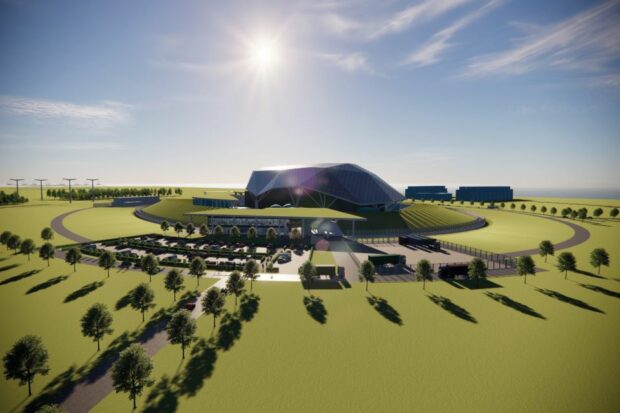The United Kingdom has officially selected Rolls-Royce SMR (Small Modular Reactor) to lead its next wave of nuclear energy development, marking a significant step toward reducing carbon emissions and ensuring long-term energy security. With increasing global urgency to transition to cleaner energy, the decision to invest in SMRs—especially from an iconic engineering brand like Rolls-Royce—signals a pivotal move for the UK’s energy strategy.
The development of Rolls-Royce SMR not only highlights Britain's push for innovative nuclear solutions but also sets the stage for potential exports to other countries seeking compact, cost-efficient nuclear options. Let’s dive deeper into what this development means, how it fits into the broader energy landscape, and what challenges and opportunities lie ahead.
What Is Rolls-Royce SMR and Why It Matters
Small Modular Reactors (SMRs) are a new class of nuclear technology designed to be more flexible, cost-effective, and quicker to build than traditional large-scale nuclear power plants. Unlike conventional reactors, SMRs are built using modular components that can be factory-fabricated and assembled on-site, reducing construction time and cost.
Rolls-Royce SMR has proposed a 470-megawatt design that can power approximately 1 million homes. It promises a reduced physical footprint, faster deployment, and enhanced safety features—making it an attractive choice for a country looking to reduce its reliance on fossil fuels.
The UK government’s backing of Rolls-Royce SMR is part of its broader £20 billion clean energy strategy, which aims to increase nuclear’s share in the national energy mix to 25% by 2050. With wind and solar subject to weather variations, nuclear provides a stable and low-carbon source of baseload power.
Rolls-Royce also claims that its SMR program could generate up to 40,000 jobs across the UK supply chain, stimulate industrial revitalization in regions like the Midlands and the North, and drive technological exports.
A Strategic Move for Energy Independence and Climate Goals
Choosing Rolls-Royce SMR is not just a matter of domestic energy production—it’s a strategic move aimed at addressing several intersecting issues:
1. Energy Security
Russia’s invasion of Ukraine and the resulting global energy crisis have exposed Europe’s vulnerability to fossil fuel dependence. By investing in local nuclear production, the UK reduces its reliance on imported gas, bolstering national energy security.
2. Decarbonization Targets
The UK has committed to achieving net-zero carbon emissions by 2050. Nuclear power, alongside renewables, is central to this goal. SMRs, with their low emissions and reliability, are a key enabler of a low-carbon grid.
3. Economic Growth and Export Potential
Rolls-Royce anticipates that global demand for SMRs could be substantial. Countries in Eastern Europe, Asia, and even parts of Africa have expressed interest in small-scale nuclear solutions. This opens the door for Rolls-Royce SMR to become a UK-exported technology, much like Airbus in aerospace.
The Challenges Ahead for Rolls-Royce SMR
While the UK government’s selection of Rolls-Royce is a milestone, there are still significant challenges ahead before the technology can be deployed:
1. Regulatory Approval
The design must undergo the UK’s Generic Design Assessment (GDA), a rigorous process expected to take up to four years. Approval is essential before construction can begin.
2. Funding and Cost Overruns
Although the government has pledged initial funding, large infrastructure projects, particularly in nuclear, often suffer from budget overruns. Rolls-Royce estimates each unit will cost about £2.2 billion, and securing sustained investment from private stakeholders will be vital.
3. Public Perception
Despite advancements in nuclear safety, public skepticism remains high due to historical incidents such as Chernobyl and Fukushima. Rolls-Royce and the government must build public trust through transparent communication and community engagement.
4. Supply Chain Readiness
Scaling up the modular approach requires a robust manufacturing supply chain that can handle precision components and nuclear-grade materials. Building this infrastructure quickly will be critical to meeting deployment timelines.
Despite these hurdles, many analysts believe Rolls-Royce SMR is well-positioned to overcome them, thanks to the company’s extensive engineering heritage and government backing.
Global Implications of the UK’s SMR Decision
The UK’s endorsement of Rolls-Royce SMR is already generating international interest. SMRs are particularly appealing to countries that lack the capital or space for large-scale nuclear projects. For developing nations looking to balance electrification with climate goals, SMRs could be a game-changer.
Additionally, if the UK successfully becomes the first country to deploy and commercialize SMRs, it could set global standards for technology and safety protocols. This would give Rolls-Royce SMR a first-mover advantage in a potentially trillion-dollar global market.
Countries such as Canada, the United States, and South Korea are also investing in SMRs, making the space increasingly competitive. However, the British government’s strong industrial strategy, combined with Rolls-Royce’s global reputation, gives it a unique edge.
Rolls-Royce SMR as the Future of Clean Nuclear Power
The UK’s decision to move forward with Rolls-Royce SMR marks a bold step into the future of clean, compact nuclear energy. With the world in search of reliable, zero-emission power sources, SMRs could become the cornerstone of global energy transformation—and Britain aims to lead the charge.
Whether the program succeeds will depend on technological execution, regulatory agility, and the ability to rally public and political support. But if done right, Rolls-Royce SMR could reshape the energy sector, provide thousands of skilled jobs, and secure the UK’s position as a global leader in nuclear innovation.
Read More






 Sunday, 14-12-25
Sunday, 14-12-25







